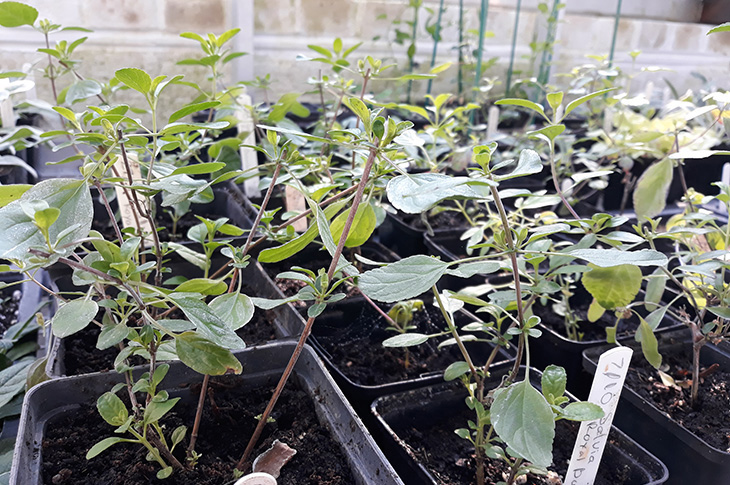 Hello my name is Pete, I am the senior gardener at Highdown Gardens.
Hello my name is Pete, I am the senior gardener at Highdown Gardens.
This month I wanted to share with you some of the regular propagation work which takes place in the garden.
Highdown Gardens has lots of different plants in its collection. Some are important mature examples or rare species, and these are being catalogued and propagated by our Plant Heritage Officer.
Many of the plants in the garden are more modest in their historical or botanical importance but still contribute to the interest and look of the garden.
Plants like these do not live forever. Some have very short lives naturally and others can find our climate challenging.
In order to ensure the continued presence of these plants in the garden different methods of propagation can be used.
Last year during the late summer and autumn, the gardeners were saving seeds from plants such as Tithonia ‘Torch’ and Lychnis Coronaria.

The Tithonia cannot survive our winter and only likes to live outside when there is no frost. It is usually fine in the South of England between May and October.
The seed has recently been sown in trays filled with seed compost and placed in our heated glass house. This should give us strong, young plants which can be planted out in the garden in May or June.
The Lychnis is a short-lived perennial that can survive our winters, so we have taken a different approach.
The seed was collected and sown in the autumn in our heated glass house. This has produced some lovely little garden ready plants which will only need acclimatising to the cold in our cold frames. They will be planted out later in the spring.
We also have a few lovely shrubby Salvias in our sensory garden. These can suffer if we have a bad winter so it is wise to take a few cuttings every year.

Last September and October we took several cuttings from healthy, typical non-flowering stems, putting four to six in a 9cm pot filled with compost and perlite, a mineral which keeps the soil loose and well-drained, and placed them in our new heated glass house.
Earlier this month we separated all the cuttings and potted them up individually. These will make garden ready replacements for any we have lost over the winter, or give us plants to use in other areas of the garden.
This type of propagation is enjoyable and cost-effective, and there is something incredibly satisfying about watching a seed you have planted, or a cutting you have taken, grow.